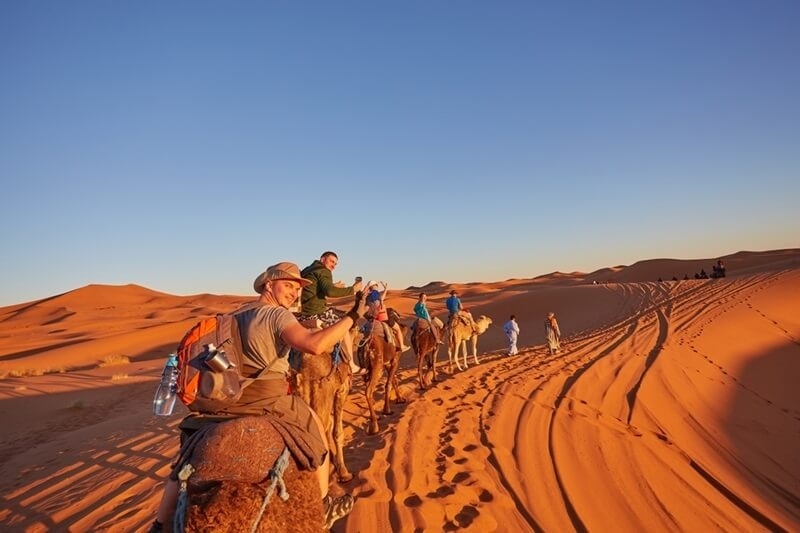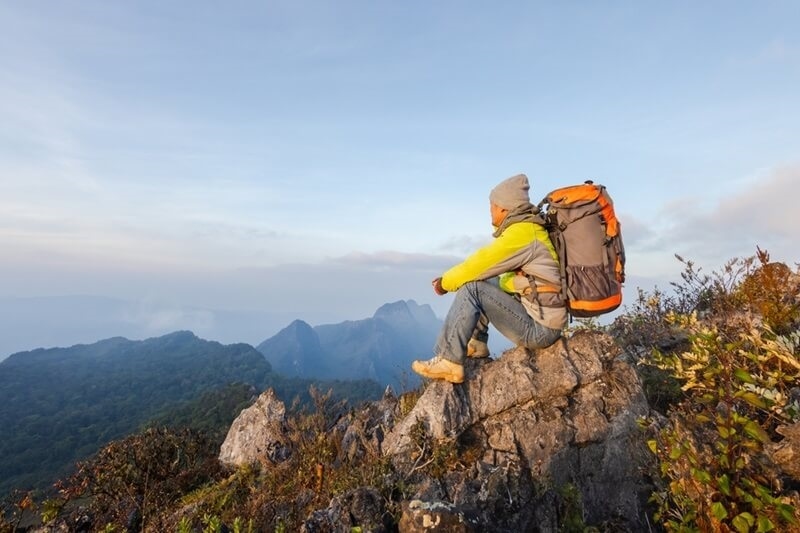
Adventure travel typically provides what regular vacations don’t—the opportunity to move, discover, and interact more deeply with nature and the cultures there. Whether trekking through lush trees, paddling placid bodies of water, or biking along scenic trails, the excitement you feel through sheer discovery brings incredible satisfaction to your adventure travel experience.
If you're new to adventure travel, don’t worry; adventure travel for beginners—where to start and what to pack—is easier than you think. Armed with the right approach, planning, and gear, your first trip can set off an ever-expanding lifetime of exploration.
In this guide to adventure travel for beginners, you will learn how to select the right kind of trip, about soft adventure travel, what to pack for an active trip, and how to evaluate safe adventure travel destinations appropriate for first-time adventurers.
Adventure travel differs significantly from traditional travel, which focuses on leisure and sightseeing. Adventure travel emphasizes physical activity and experiences that connect you to nature, culture, and personal growth. Rather than looking at a mountain, you’re hiking it.
Rather than tasting food, you’re learning how local people made it. This engaged, active way of travel turns adventure travel into something both exhilarating and life-changing. But you do not have to climb Everest to be an adventurer! And the beginner level of travel is more welcoming than ever!

Soft adventure travel is an excellent option for first-time travelers. This type of travel includes fun and safe adventures that do not require extensive training or development of physical fitness levels.
Some examples of soft adventure activities:
These trips do have light physical activity. They provide a memorable experience within a soft adventure where travelers can begin their adventures!
Adventure travel doesn’t mean you must rough it or push your limits to the extreme. Think about what excites you and what type of environment you enjoy most.
Choosing the correct location is key. Focus on safe adventure destinations with good infrastructure, welcoming locals, and easy activity access.
Here are some beginner-friendly places that are perfect for soft adventure travel:
Known for its biodiversity, rainforests, and eco-lodges. Offers zip-lining, nature hikes, and beach adventures.
Scenic coastlines, ancient towns, and mild trails make it great for first-time cyclists and hikers.
Gentle trekking, jungle river rafting, and friendly locals combine cultural and physical exploration.
With safe trails, diverse landscapes, and friendly tourism services, New Zealand is made for adventure.
National parks like Banff or Jasper offer hiking, canoeing, and wildlife viewing, all with well-managed safety protocols.
These countries have strong tourism infrastructure, low-risk environments, and a wide variety of guided tours ideal for newbies.
If you’re unsure where to begin, consider joining an adventure tour for newbies. These are group experiences led by professionals who provide equipment, safety briefings, and local knowledge.
Look for tour companies that offer beginner-level itineraries, manageable physical intensity, and flexible schedules.
As a beginner, you may worry about endurance, safety, or packing. The key is preparation and pacing.
Your job is to stay flexible, curious, and open to the surprises along the way.
Packing smart can make or break your experience. Here’s what you need to stay comfortable, safe, and prepared.
Traveling light and agile is better than carrying unnecessary items you’ll regret bringing.
Here’s a beginner-friendly plan to help visualize what a week of soft adventure could look like:
This itinerary blends movement with downtime, giving you a complete experience without burning out.
Your safety as a first-time adventurer depends on awareness and planning. Here’s how to keep your trip secure and enjoyable:
Being adventurous doesn’t mean being reckless—take smart risks, not unnecessary ones.
Adventure travel isn’t about perfection—it’s about participation. Don’t worry if you’re not the fastest hiker or the most graceful kayaker.
Even experienced travelers make errors. Avoid these common pitfalls:
It’s okay to start small and build confidence with each new journey.
Adventure travel for beginners—where to begin and what to pack—is about opening the curtain to a more fulfilling way to travel the world. You don't have to be an expert backpacker or a fitness guru—you need curiosity, a little courage, and a fully packed bag.
With this beginner adventure travel guide, you will be prepared to choose a suitable destination, organize your camping gear, and plan an unforgettable adventure. Whether hiking scenic trails, paddling calm lakes, or biking through nearby villages, your first trip will be more than a vacation—it will be the start of your adventure travel story.
This content was created by AI